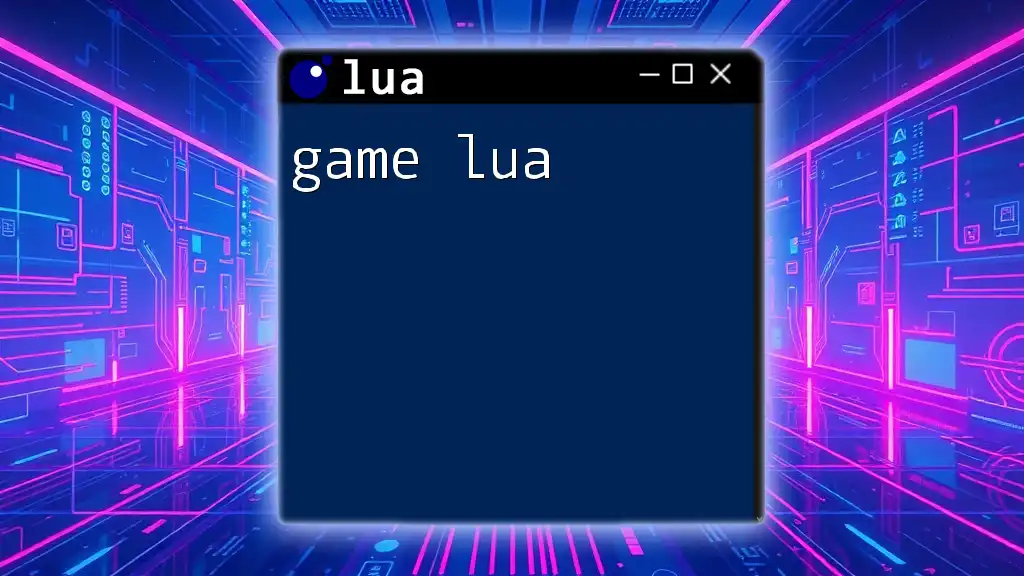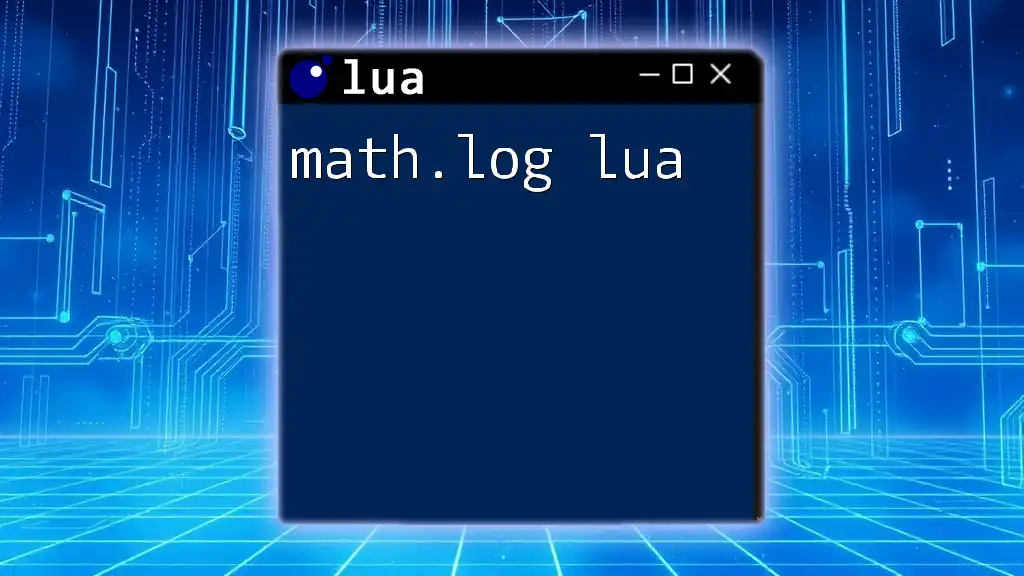`table.move` in Lua is a function that moves elements from one table to another, allowing for a flexible way to rearrange or copy items within a table.
Here's a code snippet demonstrating its usage:
local source = {1, 2, 3, 4, 5}
local destination = {}
table.move(source, 2, 4, 1, destination) -- Moves elements from index 2 to 4 in source to index 1 in destination
for i, v in ipairs(destination) do
print(v) -- Output will be 2, 3, 4
end
What is `table.move`?
`table.move` is a powerful function in Lua used for manipulating tables, specifically for moving elements from one part of a table to another. It is particularly beneficial when you want to rearrange elements without resorting to manual copying or looping, thereby enhancing both performance and code simplicity.
In comparison with other table manipulation functions, `table.move` stands out due to its efficiency and lower chances of errors. It allows for bulk movement of contiguous elements, making it ideal for scenarios like shuffling, extracting subsections, or merging tables.

Syntax of `table.move`
Understanding the syntax of `table.move` is crucial for effective use. The basic syntax is as follows:
table.move(source, source_pos, target_pos, length, target)
This function has five parameters:
- source: The source table from which elements are being moved.
- source_pos: The starting index in the source table.
- target_pos: The starting index in the destination table.
- length: The number of elements to move.
- target: The target table where elements are being moved to.
Understanding how each parameter works will greatly enhance your ability to use this function effectively.

How to Use `table.move`
Understanding the Parameters
-
Source: This is the table from which you want to move elements. Keep in mind that only tables can be used here, and they can be indexed in multiple ways (numerically or via keys).
-
Source Position: This defines the starting point in the source table. It's crucial to ensure this index is valid; otherwise, it could lead to unexpected behavior.
-
Target Position: Similar to source position, this defines where in the target table the elements should be placed.
-
Length: This defines how many elements you want to transfer from the source table, and it must not exceed the available range.
-
Target Table: This is the table where the elements will be moved to. Notably, the target can technically be the same as the source, allowing for rearrangements within the same table.
Example 1: Moving Elements Within the Same Table
Here’s an example showing how to move elements within the same table:
local myTable = {1, 2, 3, 4, 5}
table.move(myTable, 1, 3, 4, myTable)
In this example, we're moving elements from positions 1 to 3 (i.e., 1, 2, and 3) to start at position 4 in the same table. The resulting `myTable` will look like this: `{1, 2, 3, 1, 2, 3, 4, 5}`.
This usage is significant because it allows you to duplicate elements in a straightforward manner without needing a loop, providing cleaner code.
Example 2: Moving Elements Between Different Tables
The following example demonstrates moving elements between different tables:
local sourceTable = {1, 2, 3, 4, 5}
local targetTable = {}
table.move(sourceTable, 2, 4, 1, targetTable)
In this case, we're transferring elements from `sourceTable` starting from index 2 to index 4 into `targetTable`, making `targetTable` equal to `{2, 3, 4}`.
Moving elements between different tables is advantageous when you need to compartmentalize data.

Key Benefits of `table.move`
Using `table.move` comes with various advantages:
- Performance Improvements: The built-in function optimizes element movement, making it more efficient than manual copying.
- Simplicity: It allows for compact and readable code, reducing the potential for bugs that can arise from complex loops.
- Versatility: Its ability to handle diverse operations makes it an invaluable part of any Lua programmer's toolkit.

Common Use Cases for `table.move`
Shuffling Elements
`table.move` can be employed to easily shuffle elements within a table. For instance:
local myTable = {1, 2, 3, 4, 5}
table.move(myTable, 1, 5, 1, myTable)
This code moves all elements to the starting position, allowing for random shuffling.
Extracting a Subsection of a Table
You may also want to extract specific sections of a table. Here’s how you can achieve that:
local fullTable = {10, 20, 30, 40, 50}
local subsection = {}
table.move(fullTable, 3, 5, 1, subsection)
After executing this code, `subsection` will contain `{30, 40, 50}`, efficiently extracting the last three elements.
Combining Tables
Merging tables can also be done smoothly with `table.move`. For example:
local tableA = {1, 2, 3}
local tableB = {4, 5, 6}
table.move(tableA, 1, 3, 4, tableB)
In this scenario, `tableB` will become `{4, 5, 6, 1, 2, 3}`, demonstrating how easily you can combine tables.

Best Practices When Using `table.move`
To maximize the benefits of `table.move`, consider these best practices:
- Avoiding Common Pitfalls: Always ensure your indices are within the correct range to prevent runtime errors.
- Performance Considerations: While `table.move` is efficient, understand its complexities in larger datasets to ensure optimal performance.
- Readability and Maintainability: Make your code easy to read by adding comments where necessary, especially if your use of `table.move` is complex.

Conclusion
In summary, `table.move lua` is an essential function that enhances your ability to manipulate tables effortlessly. By understanding its syntax and various applications, you can effectively make your Lua programming more efficient and succinct. Experiment with the function to discover new ways to enhance your code, and feel free to share your experiences or ask questions to deepen your understanding.

Additional Resources
For further learning, consider visiting the official Lua documentation or engaging with Lua programming communities for more insights. Additionally, exploring advanced table manipulation techniques can open up new possibilities in your coding journey.

Frequently Asked Questions
Can `table.move` handle non-numeric keys?
While `table.move` is primarily designed for numeric indices, it can also move elements that contain non-numeric keys. However, make sure you are aware of how such keys interact within the context of the operation.
What happens if the source or target positions are out of bounds?
When indices are out of bounds, Lua will handle this gracefully by ignoring ranges that fall outside the length of the table, thus preventing runtime errors.
How is `table.move` different from array manipulation in other languages?
Unlike some languages that require more verbose syntax for similar operations, Lua's `table.move` is simple and built-in, allowing for quicker, cleaner manipulation of data structures.

















